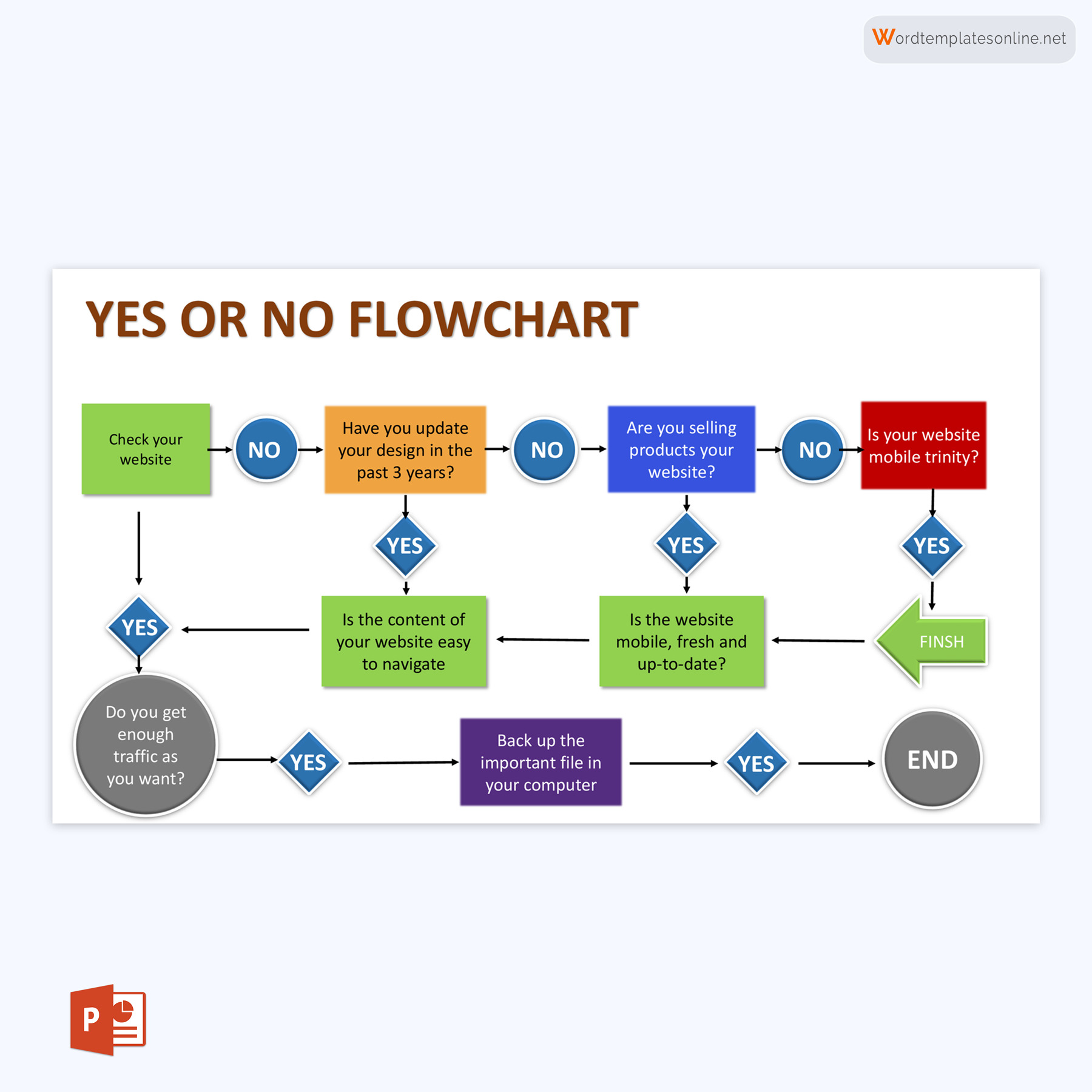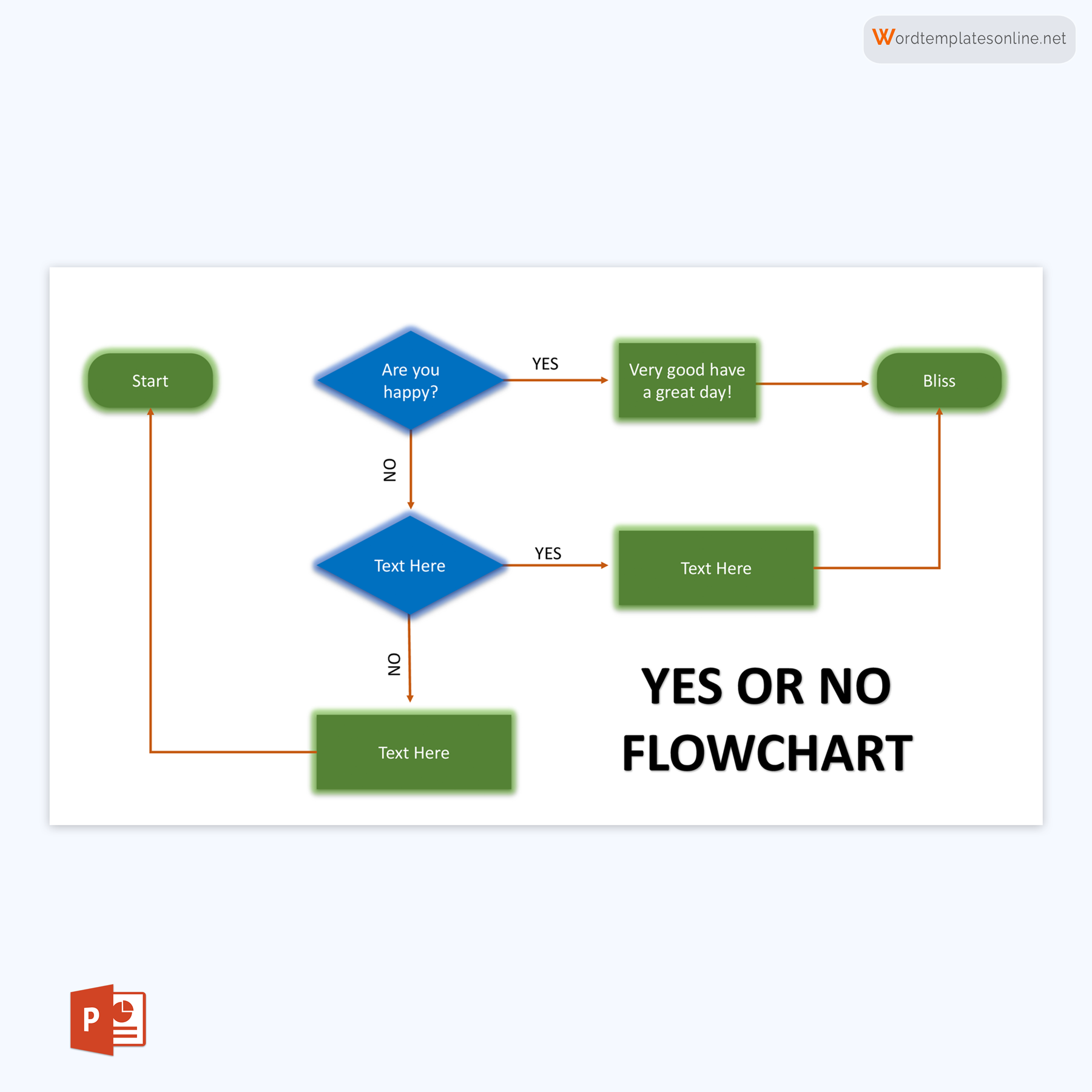Decision-making is a complex process that requires the analysis of multiple variables at once to make the right choice. This complexity makes decision-making challenging for most people and organizations. Consequently, this presents a need for an established framework for simplifying and streamlining the decision-making process, such as a yes-no flowchart. Such a tool eliminates ambiguity and facilitates a people-first approach that factors in the needs and values of the decision-makers. This leads to inclusive, empathic, and favorable decisions.
This article discusses the utility of a yes-no flowchart as a decision-making tool, its significance, and how to create one for your needs. Also, it highlights common mistakes you should avoid while using this tool in the decision-making process.
What is a Yes No Flowchart?
A Yes-No flowchart is a visual representation of a decision-making process or a series of choices that lead to different outcomes based on yes or no answers to specific questions.
It is alternatively known as a decision tree or a binary decision diagram. It is a type of diagram used to map out a sequence of complex decision scenarios and their potential consequences/outcomes to make informed choices at the end.
The flowchart provides a structured framework to help you break down decisions into a series of binary (yes and no) questions. Each possible outcome (yes or no) is then developed into an independent branch in the chart. The branches thus represent the different choices that can be made based on the answers to the initial questions. They typically lead to additional decision points or final outcomes, forming a branching structure similar to a tree.
Consider using our free downloadable templates to create yes-no flowcharts when making decisions. Remember that while you can significantly expedite the process, you might need to adjust and customize it to represent your decision-making process accurately. You can edit the text, questions, decisions, and outcomes to match your specific scenario. You can also amend the colors, fonts, and layout to suit your preferences.
Free Templates












Significance of a Yes No Flowchart
Yes-no flowcharts are versatile tools that enhance and streamline decision-making processes. They also improve communication by presenting complex information in an accessible and structured manner.
Below are the reasons for utilizing a yes-no flowchart to make decisions:
- A flowchart simplifies complex decision scenarios by breaking down decisions into binary choices (yes or no). This makes it easier to understand the process and the possible outcomes at a glance. Consequently, this reduces information overload, thus facilitating well-informed and precise decisions.
- Flowcharts encourage a step-by-step approach to decision-making. Each step is clearly defined, leading to a logical progression of choices. This aids in ensuring that decisions are based on all vital factors as all options are evaluated. This also guarantees that the decision-making process follows a consistent methodology.
- A flowchart offers a way to communicate complex decision-making processes to various stakeholders, including team members, clients, or executives, in a visually understandable manner. Visualizing the decision process promotes shared understanding and facilitates collaboration, enabling teams to provide valuable input and align their efforts toward a common goal.
- Flowcharts promote a culture of continuous improvement. By having a consistent decision-making methodology, you can review, collect feedback and identify bottlenecks, inefficiencies, and areas for optimization. This leads to targeted improvements in processes, resulting in enhanced flowchart effectiveness and efficiency for future use. This is also a means for aligning the decision-making process with your fluctuating needs.
- Yes-No flowcharts enhance decision transparency by providing a clear record of how a decision was reached. This transparency fosters accountability as stakeholders can trace the decision-making process back to its roots, understanding the rationale behind each choice.
Step-by-Step Guide to Creating a Yes-No Flowchart
In a template for a yes-no flowchart, shapes represent different elements of the decision-making process. Each shape carries a specific meaning and helps convey information about the structure and flow of the decision tree.
The common shapes used in such a template include an oval, rectangle, diamond, circle, and parallelogram. An oval or rounded shape box represents the start or end point of the flowchart. A rectangle represents a process or action that occurs as part of the decision-making process. A diamond shape represents a decision (yes-no) point in the flowchart. It is where a choice needs to be made based on a question or a condition.
The flow then diverges into different paths depending on the answer to the question. Then, a circle shape represents a connector point in the flowchart. The connector indicates where the flow continues on another or a different page. On the other hand, a parallelogram indicates a data or information input or output that enters or exits the decision-making process. This data or information may come from external sources or outcomes of a particular decision made by stakeholders before or during the decision process.
These shapes collectively and visually represent the decision-making methodology/process, making understanding the sequence of choices and outcomes easier. Below is a step-by-step guide you can adopt to use a template to create an effective yes-no flowchart;
Step 1: Define the purpose and its scope
Clearly define the purpose of the decision or process you want to represent in the flowchart. Then, define the scope or context of the decision to be made. To do so, identify the goals and objectives of the decision-making process and the stakeholders involved. Also, gather all the information, conduct research, and seek input from relevant experts needed to make an informed decision. This step helps you remain objective throughout the decision by focusing only on the essential aspects.
tip
Be concise and use unambiguous language to define the purpose and scope. Do not use too complex or vague definitions to avoid misunderstandings or confusion later in the decision-making process.
Step 2: Outline the available options and potential consequences
Next, list the different options or choices that can be made at each decision point. To develop the options, consider the various alternatives, courses of action, or strategies. Also, identify the potential outcomes or consequences of each choice or path. Consider both short-term and long-term and the positive and negative implications of each decision.
tip
You should consider a broad range of possibilities in order to develop a comprehensive list of options and consequences. You can obtain such options and consequences from research.
Step 3: Map out the decision flow with “Yes” and “No” paths
Then, determine the specific question(s) that need to be answered with “yes” or “no” choices. Start with a clear starting point. This should be the first major question that influences the subsequent questions. Create a decision node for each “yes” or “no” question. Then, continue to create nodes and branches for each yes or no path until you have captured all relevant decision points (options and consequences).
Step 4: Integrate additional factors or considerations (if necessary)
If your decision-making process involves factors beyond “yes” or “no,” consider adding additional decision nodes for those factors. Such factors include external variables, legal constraints, ethical considerations, or stakeholder perspectives. Connect these nodes to the existing flowchart at the appropriate decision points.
pro tip
You should consider utilizing premade templates to create flowcharts for different decision scenarios. This is because they provide a ready-to-use structure for creating a flowchart. This saves time as you do not have to create the flowchart from scratch. There are multiple free templates you can select from. Choose one that aligns with your specific-decision making needs, project planning, personal choices, or business strategy.
Step 5: Finalize the flowchart and ensure clarity and simplicity
Lastly, review the flowchart to ensure that the flow of decisions is clear and easy to follow. Ensure there is a clear, coherent, and logical path from the original question to the final outcome. Eliminate unnecessary complexity, redundant or unnecessary steps, focusing on the core decision-making process.
important
After designing the flowchart, test it with a sample decision to determine its effectiveness. Share the flowchart with colleagues or stakeholders to gather feedback on its clarity and accuracy. Make sure it is user-friendly and serves its intended purpose.
Common Mistakes to Avoid When Creating a Yes-No Flowchart
A well-crafted template greatly influences the accuracy and effectiveness of the yes-no flowchart. If mistakes are made in the design process, the flowchart may fail to capture the decision-making process effectively.
Here are some pitfalls to pay attention to:
Overcomplicating the flowchart with unnecessary branches
Flowcharts are meant to simplify complex processes. Avoid making the flowchart too intricate by including unnecessary decision points or excessive branches. This can lead to confusion and analysis paralysis as it is difficult to navigate the clustered flowchart.
Neglecting to involve key stakeholders in the process
Typically, decision-making will involve multiple individuals and departments depending on the circumstances. Therefore, if you are creating the flowchart as part of a collaborative effort, be open to feedback from colleagues or stakeholders. Ignoring valuable input can lead to a less effective flowchart. Consequently, this produces poor decisions as a result of overlooking crucial stakeholder perspectives and possible bottlenecks when designing the flowchart.
Relying solely on the flowchart without considering other factors
The yes-no flowchart should not be a standalone solution for all decision scenarios. This is because the flowchart may overlook certain factors and inputs, thus affecting the reliability of the final decision. Therefore, you should consider other factors that influence your decisions, such as expert judgment, real-time data, social factors, etc.
Not using a well-designed template
A well-designed template should align with your purpose and the complexity of your decision-making process. Therefore, a poorly designed template can lead to an unstructured and disorganized decision-making methodology. This, in turn, makes decision-making harder and can lead to biased or incomplete decision-making analysis.
Final Thoughts
In conclusion, a template for a yes-no flowchart is a powerful tool that simplifies complex decision-making processes. It fosters clarity, systematic thinking, collaboration, and transparency. It can be achieved by breaking down decisions into binary choices. These flowcharts provide a structured framework for making informed choices, ultimately leading to favorable outcomes.
Using a flowchart gives you the ability to visualize various decision paths. This empowers you and organizations to navigate intricate scenarios more effectively. Ultimately, this aligns your choices with your objectives and values.




